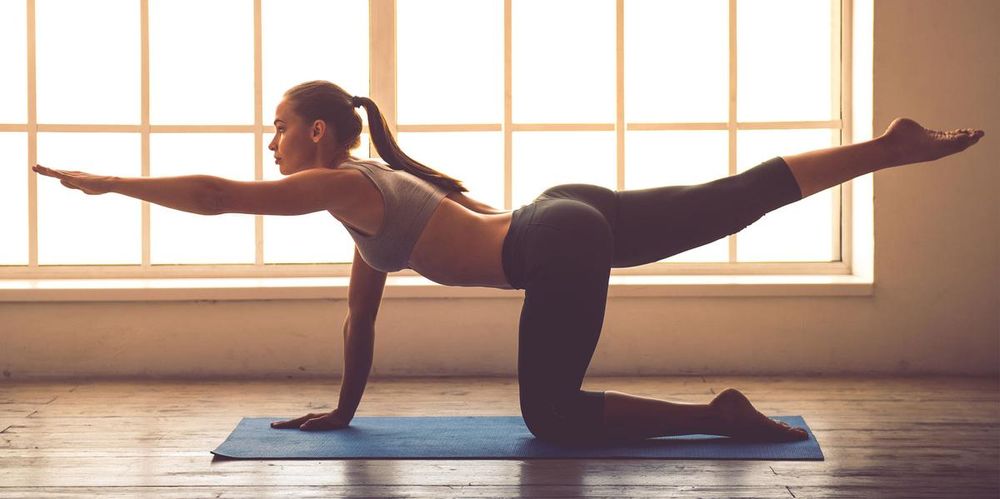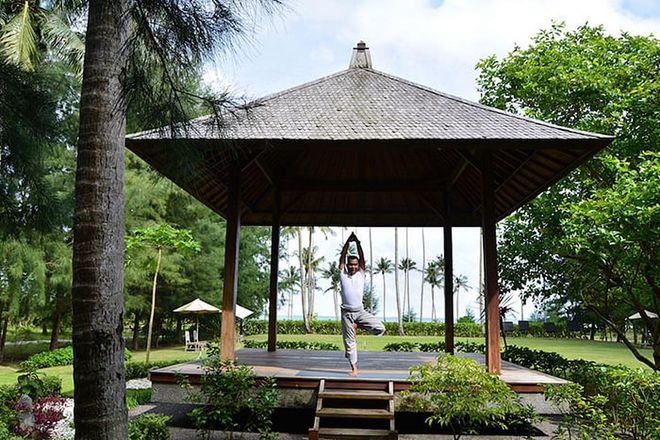What Are The Different Types Of Yoga And Who Are They Best Suited For?
International Yoga Day is tomorrow (June 21), so if you haven’t already jumped on the bandwagon of this hugely popular practice, it’s time to do so


Photo: Getty
Yoga is the practice of the mind and body with thousands of years of history in ancient Indian philosophy. It uses breathing techniques, meditation, stretching and exercising to train the body and mind to be more observant and aware of their own nature. The purpose is to achieve higher consciousness and self-regulation, but there’s also plenty of health benefits, including reduced stress, increased relaxation, an elevated mood and greater flexibility. But yoga is not a one-sized-fits-all practice. There are so many yoga styles — from physically demanding to easy and relaxing — to cater to different types of yogis.
If you’re intending to dip your toes into the peaceful waters of yoga, read on for a quick guide on what you need to know.
1. What are the different types of yoga?

Photo: Courtesy of The Sanchaya
Hatha is known as “movement” or “flow” yoga, and the flow varies according to the practitioner’s personal level of experience, says Imron, the resident yoga instructor at luxury Bintan Island resort The Sanchaya. Under Hatha, there’s Gentle Flow, which is more gentle and relaxed; the Vinyasa Flow, which involves stringing postures together so that you move from one to another, seamlessly, using breath, giving the feeling that the body is moving like air (a particularly good cardio and flexibility exercise, BTW); and Astanga, a “power” flow because you are taken through a set sequence where you have to take a minimum of five long breaths for each asana (pose). While staying put requires more energy and power, this “is a really good practice to shape the body, strengthen the muscles and to lose weight”, adds Imron.
The Sanchaya also offers other types of yoga, such as Yin Yoga: a slow-paced style with postures that give release to your muscles. It promotes myofascial release — a deep stretch and therapeutic effect that will active the meridian lines that are connected to your organs, explains Imron. This passive practice involves variations of seated and supine poses typically held for long periods of time. “If you are a really active person, or do physical work, this is an ideal type of yoga for you,” he points out. There’s also Yoga Nidra – known as yogic sleep – a meditation and conscious relaxation practice where you lie in savasana (corpse pose) as you are brought through several layers of yourself. It’s an exercise that is intended to induce total physical, mental and emotional relaxation.
Related article: All You Need To Know About Forest Bathing, The Latest Wellness Trend In Singapore
According to Pure Yoga, Vinyasa is great for someone looking to stretch their body with moderate physical effort and who want to increase theirawareness of body-breath synchronicity. This is because Vinyasa poses are held for short periods of time and an emphasis is placed on the rhythm of breathing. Ashtanga, on the other hand, is for those who are more active and want to feel the effects of a workout, as it is more dynamic and fast-moving, and is designed to make you sweat. Like what Imron says, Pure Yoga says Ashtanga combines power and flexibility with movement, body “locks” that contract muscles (bandhas) and breath to produce an energetic and detoxifying practice.
Theres also Bikram Yoga, a hot vinyasa system which features the same 26 postures and two breathing exercises in every 90 min class.
2. What are the benefits of yoga?

Photo: Courtesy of Pure Yoga
As mentioned above, yoga is an ancient healing practice that has its roots in olden-day India. It was developed as a way to achieve harmony in the body, and many studies since then have confirmed its advantages. Incorporating it into your routine can only bring about good things. Here are some of them, according to Pure Yoga:
Stress Relief: The stress and pressure of our daily lives can lead to serious illness and disease if left unchecked. A regular yoga practice calms the body and mind, boosts the immune system, and eliminates the toxins that stress creates. Many students see yoga as the perfect “cure” for a hard day at work.
Self-confidence and Self-esteem: Yoga makes you feel healthy, strong, and limber, traits that will immediately boost your self-image and self-confidence. Learning and refining yoga postures creates an enormous sense of pride that will improve the way you feel about yourself both inside the studio and out in your daily life.
Strength and Flexibility: Yoga postures strengthen and lengthen the body’s connective tissues through physical postures that have been practised for thousands of years. It doesn’t matter if you are flexible or stiff, weak or strong, yoga can transform your body and mind, and improve your overall health.
Detoxification: In almost every yoga class, you sweat, you breathe deeply, your heart rate rises, and you are stimulated to naturally eliminate toxins from the body through twisting and bending postures.
Circulation: Yoga also boosts blood circulation, increasing its flow to areas of the body like joints, connective tissues, and internal organs. Deep stretches, twists, backbends, and muscular contractions signal the body to send blood to those specific areas.
3. Which yoga type is suitable for what type of person and lifestyle?

Photo: Courtesy of The Sanchaya
For active people who work outdoors: Imron recommends Yin Yoga or Hatha Yoga with gentle flow to release tension and relax your body.
For office workers lead a sedentary life: Imron says a movement/flow practice to stabilise your body, such as Vinyasa, would be beneficial. This is because Vinyasa has a variety of postures, with no two classes ever alike, so it helps to develop a more balanced body as well as prevent repetitive motion injuries that can happen if you are always doing the same thing every day (such as looking at the computer).
For those who are feeling overwhelmed: Yoga Nidra meditation will help you connect deeply with yourself, bring joy and relaxation, and reduce stress.
Related article: How To Achieve A Victoria’s Secret Body Without The Fad Diets
For worn-out mums: Gentle yoga classes such as Hatha or Vinyasa with longer-held poses that stretch the body and mind are best, says Pure Yoga. “The deep stretches release tension in the muscles and fascia, while the gentle pace of class allows the focus to be on deep breathing, which promotes healing and restoration.”
For busy millennials: Try the Yin Yang class, says Pure Yoga. It combines an invigorating strengthening practice with long-held, deep softening stretches in order to balance the body and mind. This class features the best of both worlds and facilitates the release of unnecessary tension for body and mind, promoting relaxation and joy.
For those who love a challenge: Go for Bikram yoga. This practise requires discipline as you work through the routine in a super hot and humid room with sweat pouring down your face and body. But it’s worth it. Advocates say the heat provides a better cardiovascular workout and burns more calories.
4. I’m a beginner, how do I start?

Photo: Shutterstock
Don’t worry, you don’t have to know how to twist your body into a pretzel shape to be able to get started on Yoga. There are literally no barriers to entry. “A beginner to yoga should keep an open mind and try out various practices to see what resonates with them,” says Pure Yoga. Take your time to ease into things and see which ones are your favourite.
Related article: A Beginner’s Guide To Healing Crystals
However, a Hatha-based, alignment practice helps people learn the basics of the physical practice – not just the shapes of the poses, but also how to breathe and move from one pose to the next. It’s the most gentle and is the most accessible to those with less experience, says Imron.
One thing’s for sure, you have to pay close attention to your breathing: Newcomers to a yoga practice or people returning to their practice after a hiatus should always ensure that they are breathing deeply through their nostrils and into their belly during a class. Always remember you can work at your own pace, and if you can’t achieve a particular pose or a particular duration, take it slow and accept what your body is telling you. Most positions can be modified or altered to suit your needs as well, so communicate with your yoga instructor. Some easy positions you can try are the downward-facing dog pose and cat-cow pose.